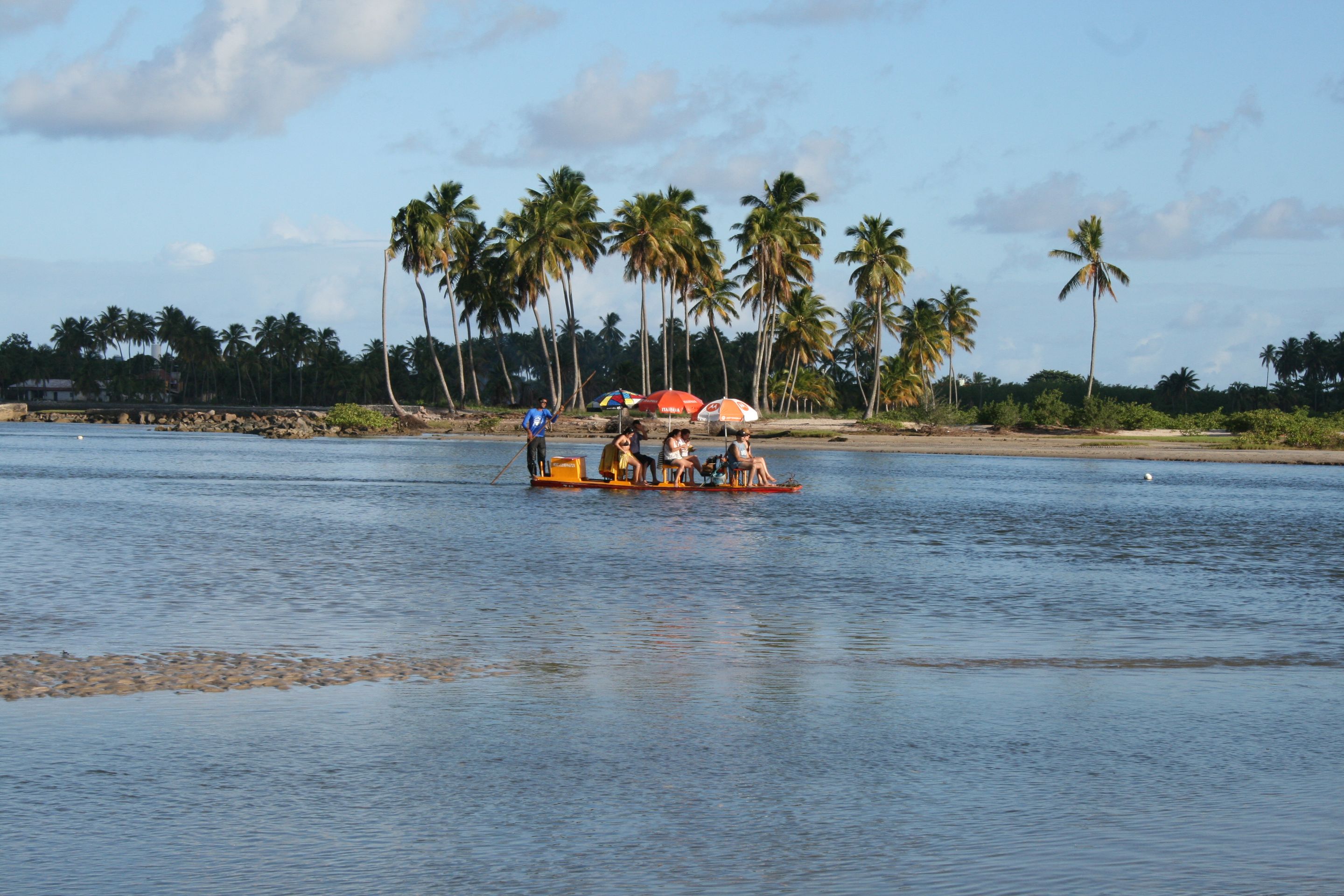
Riding shotgun with us ...
vakantio.de/riding-shotgun-with-us
On the Trail of the Gold and Ore Mine in the Karangahake Gorge
A bɔra kɛnɛ kan: 12.11.2024

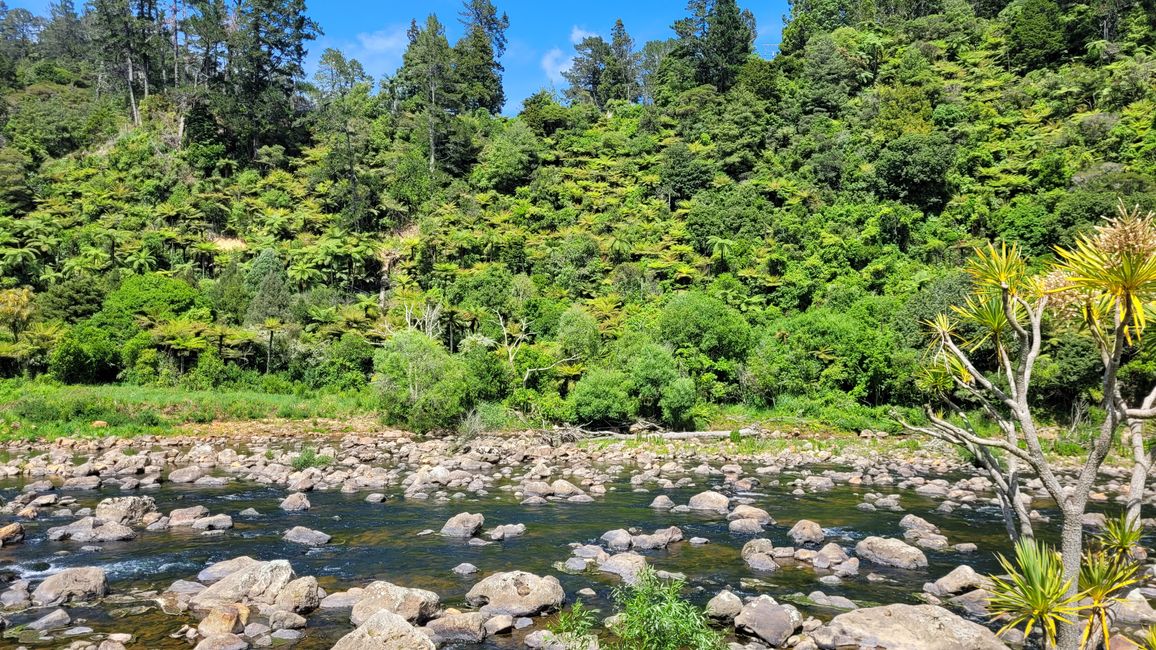
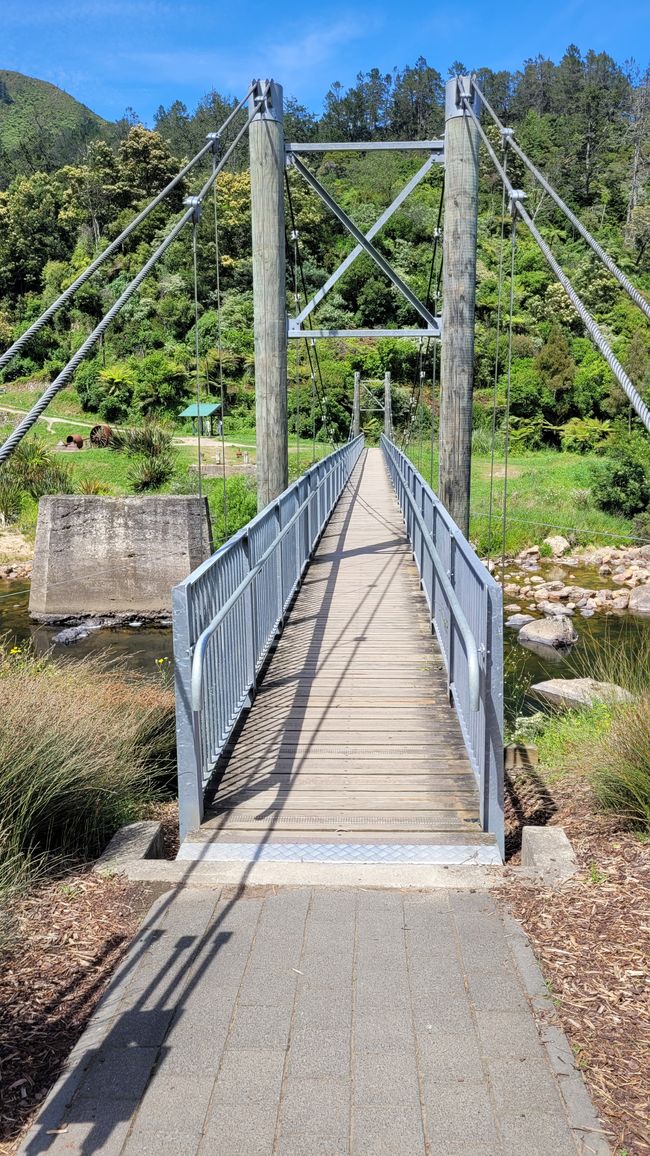
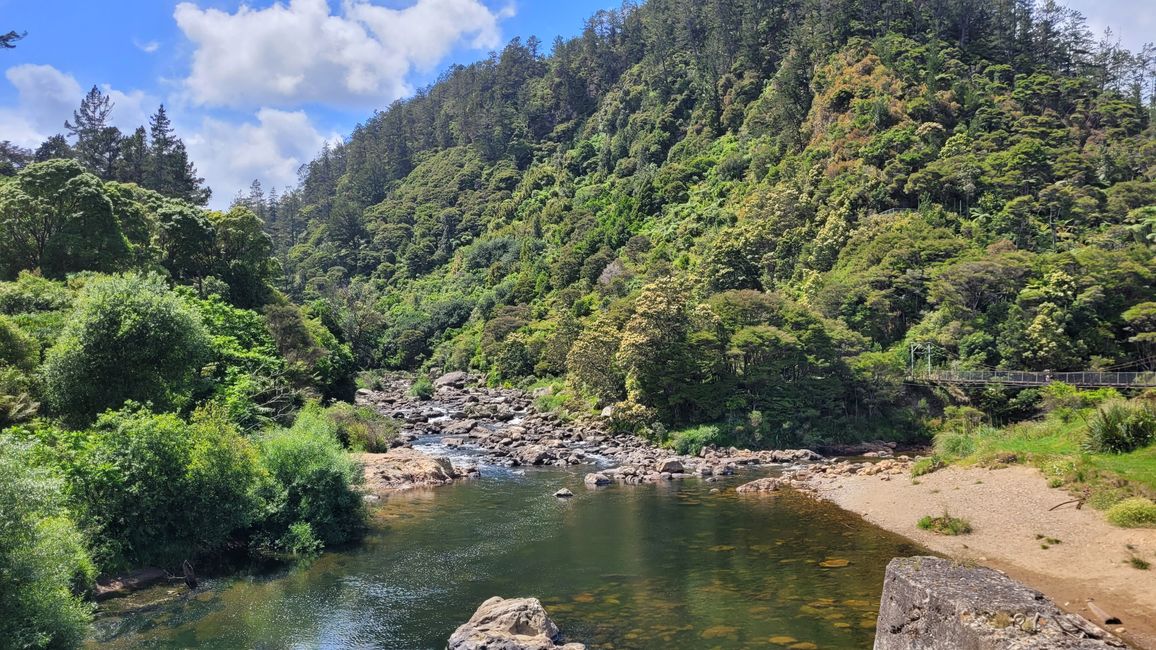
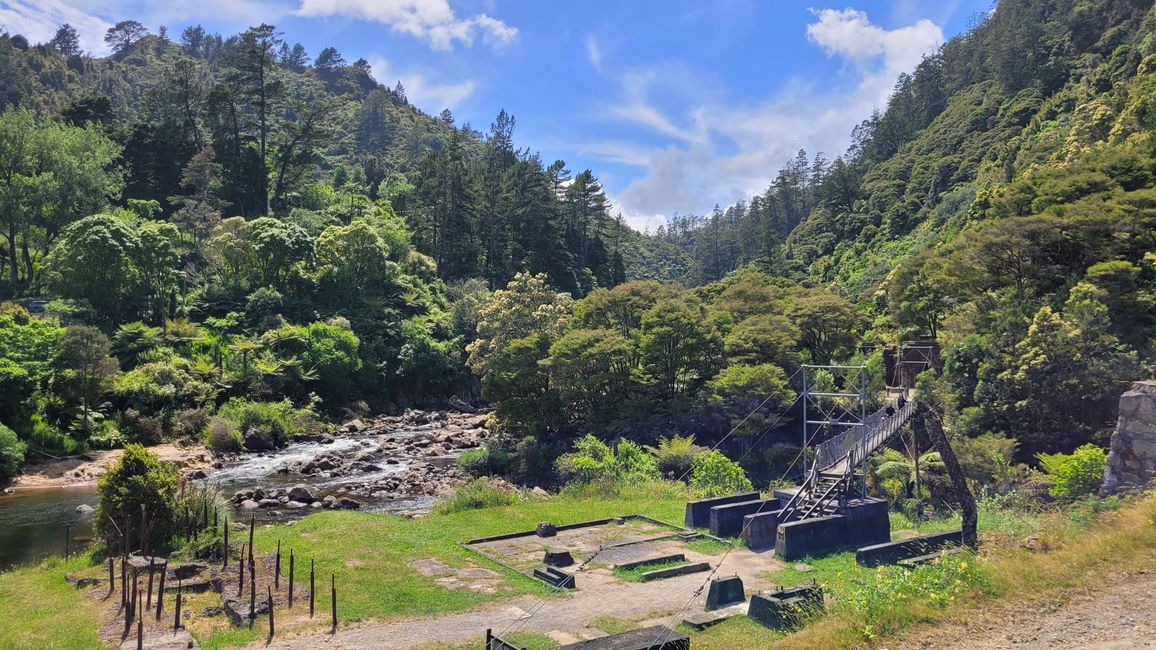
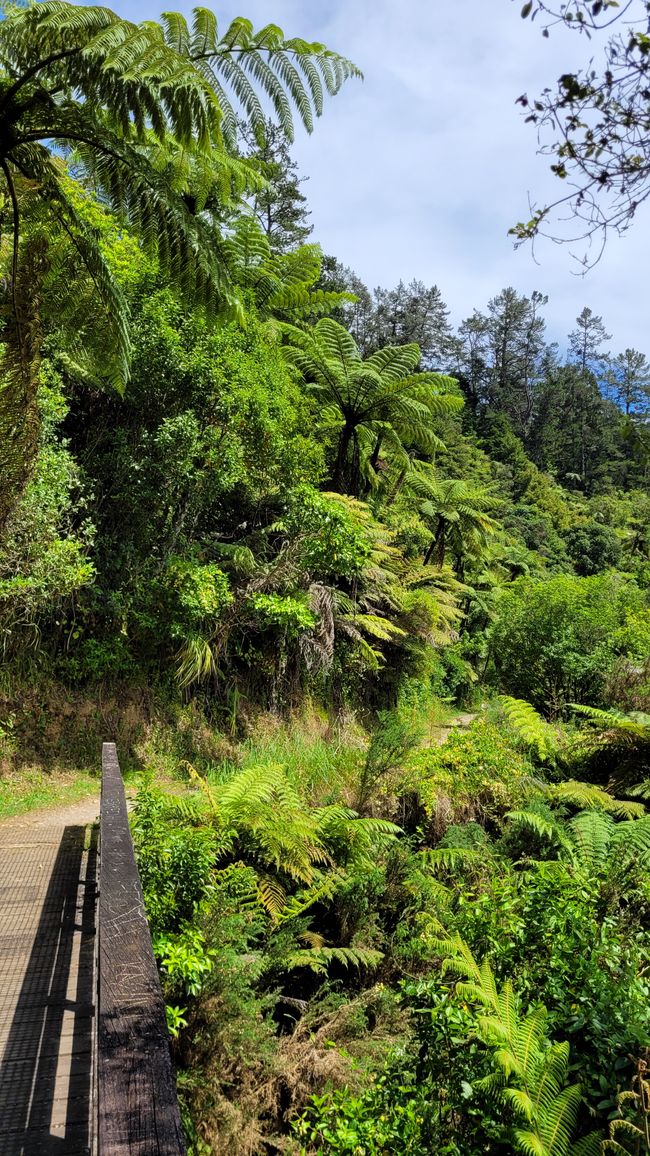
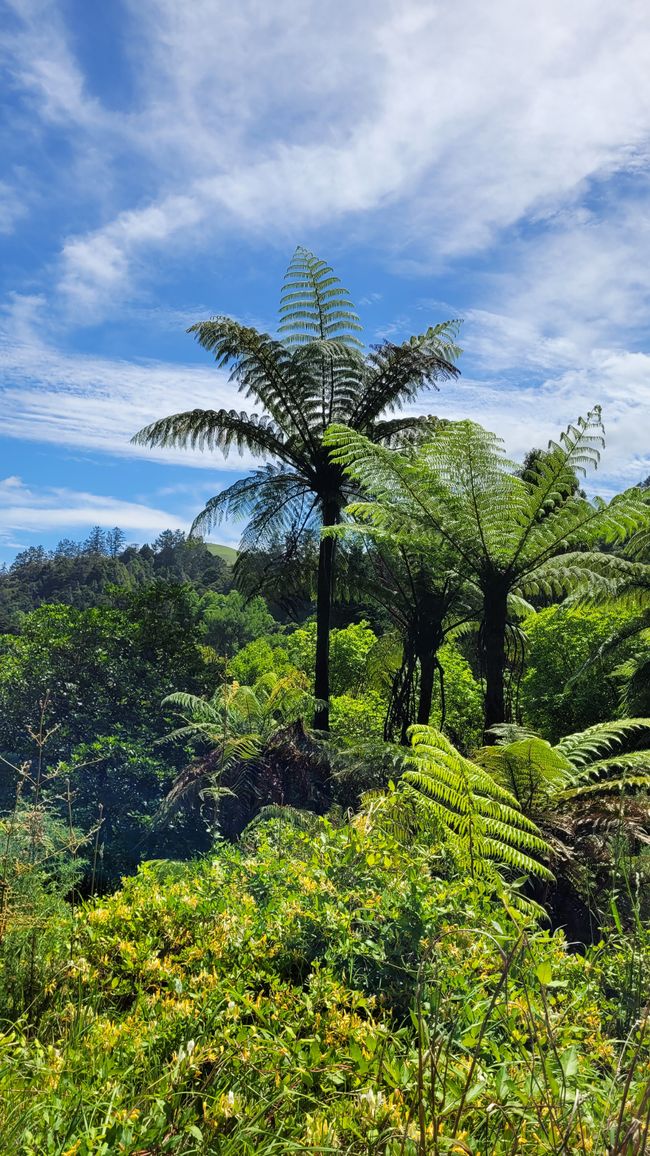
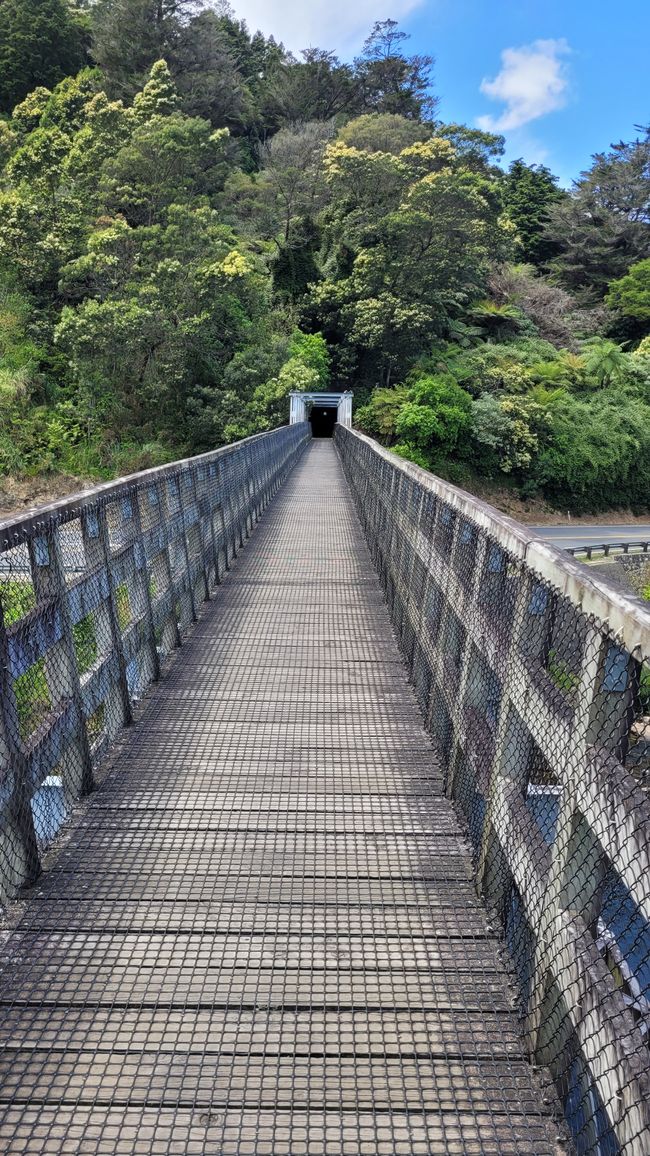
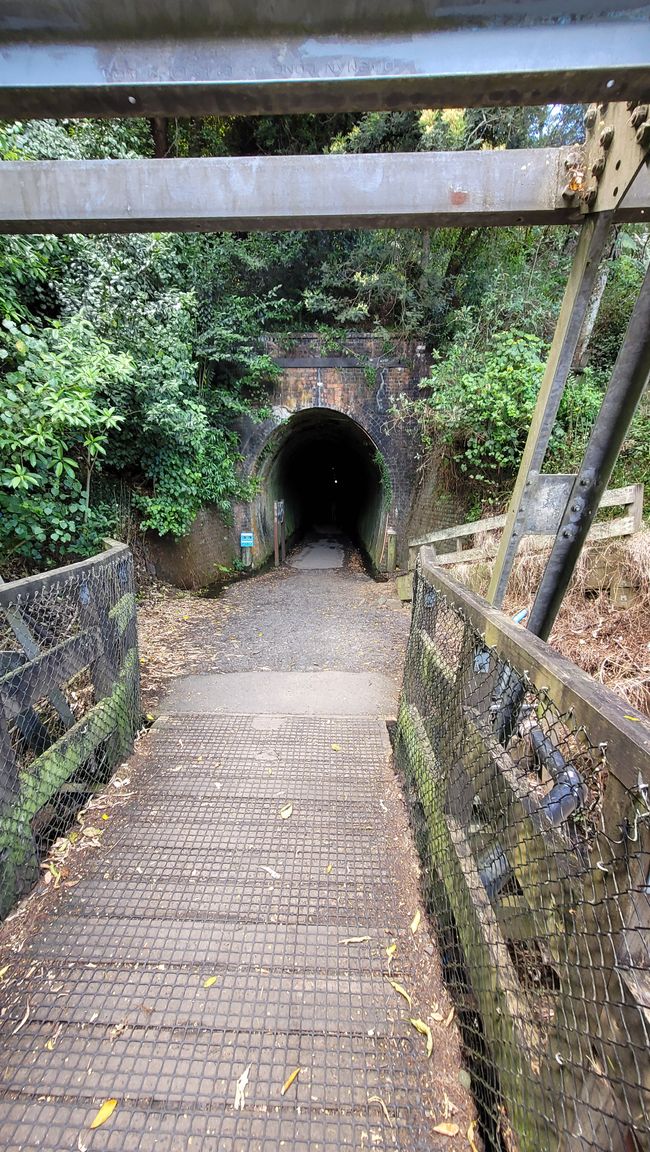
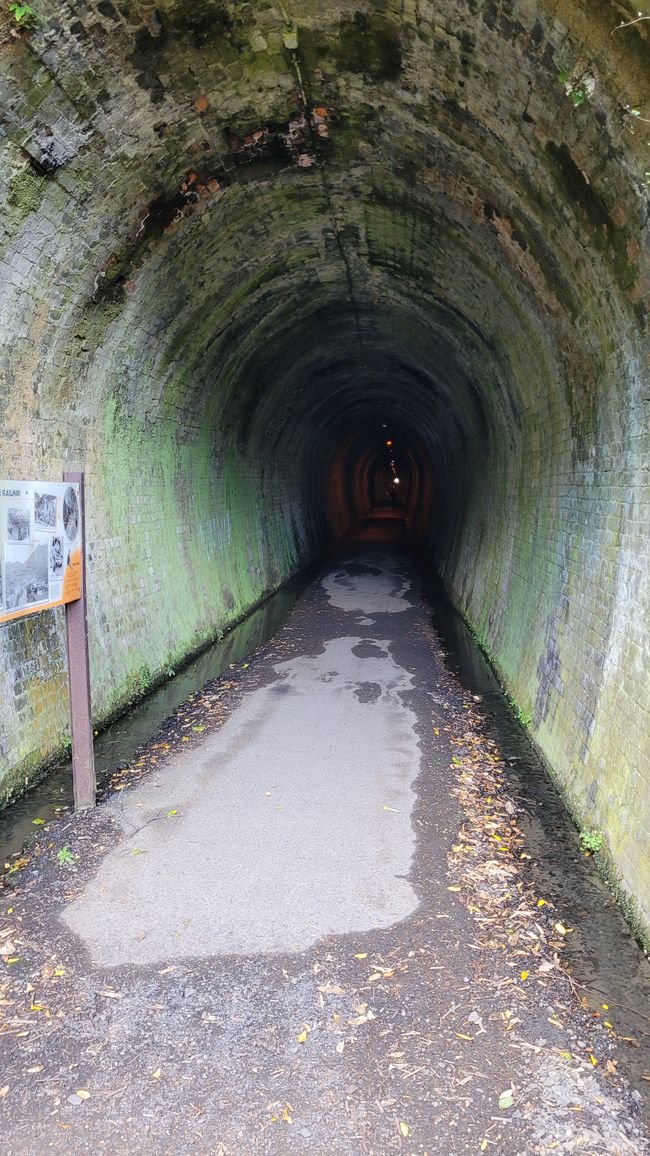
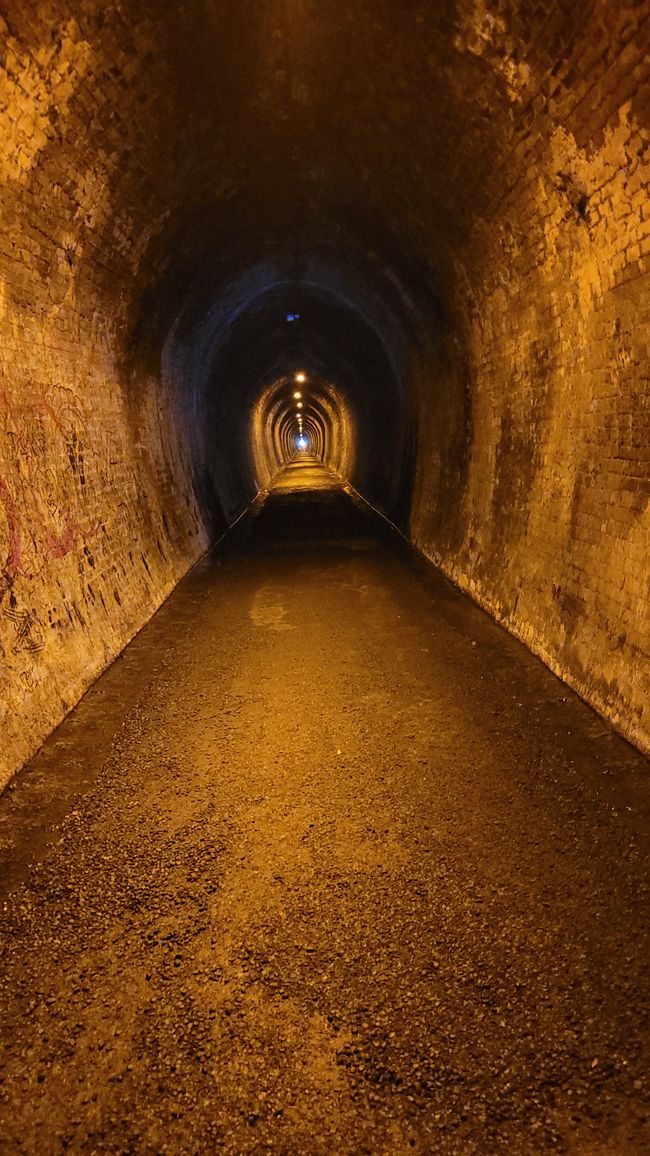
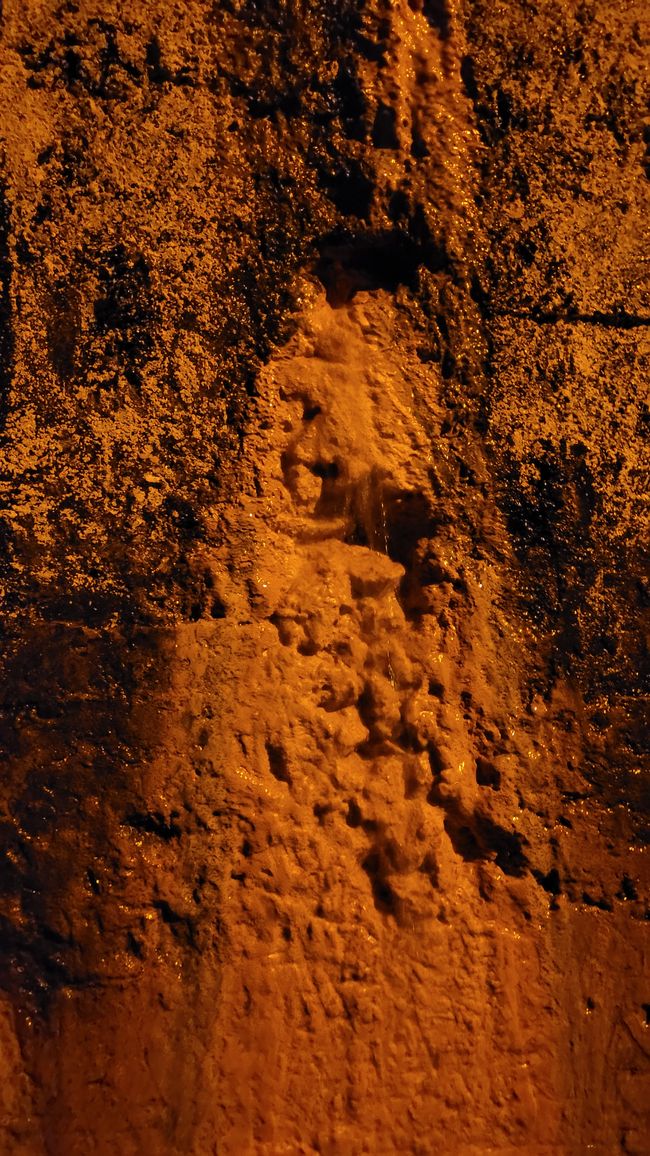
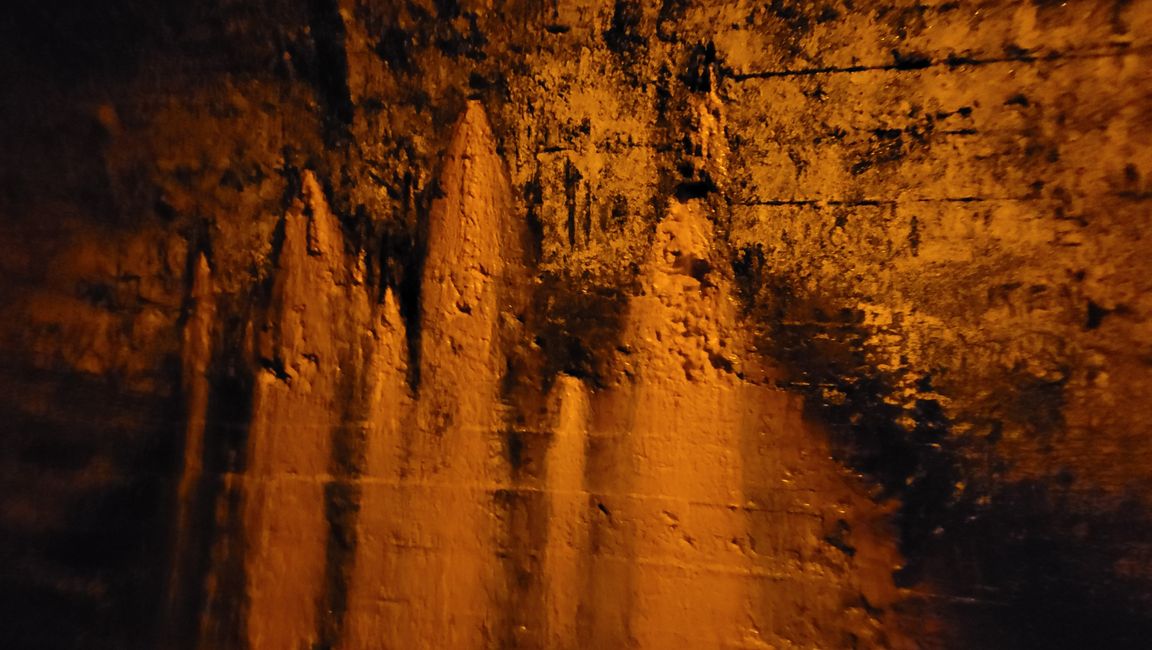
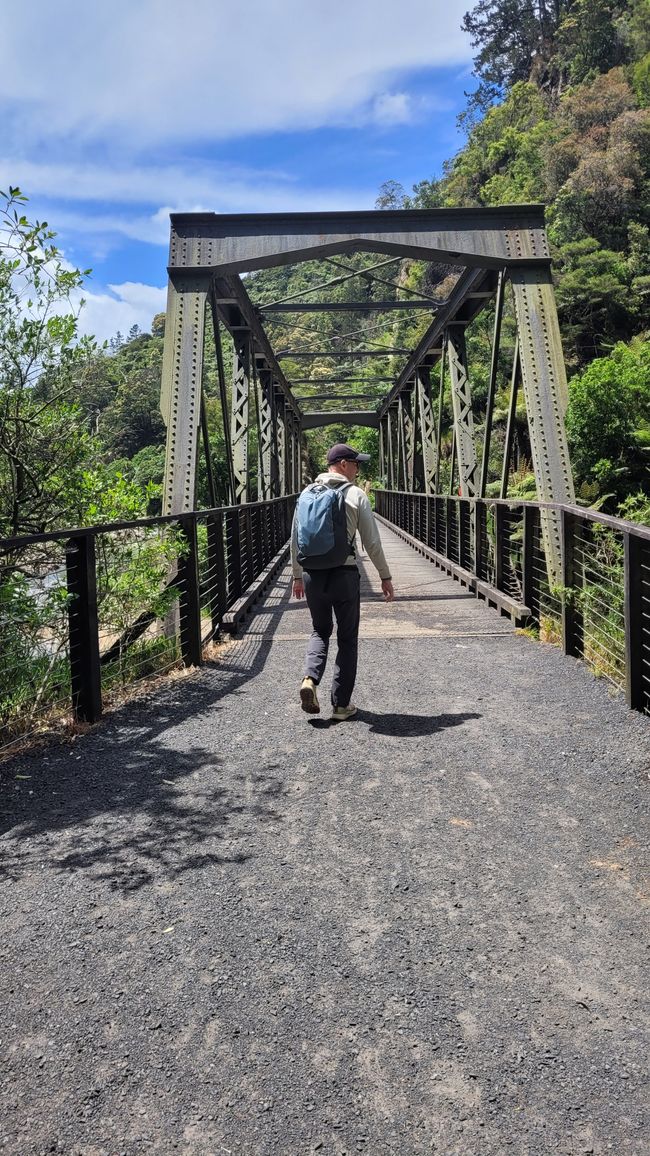
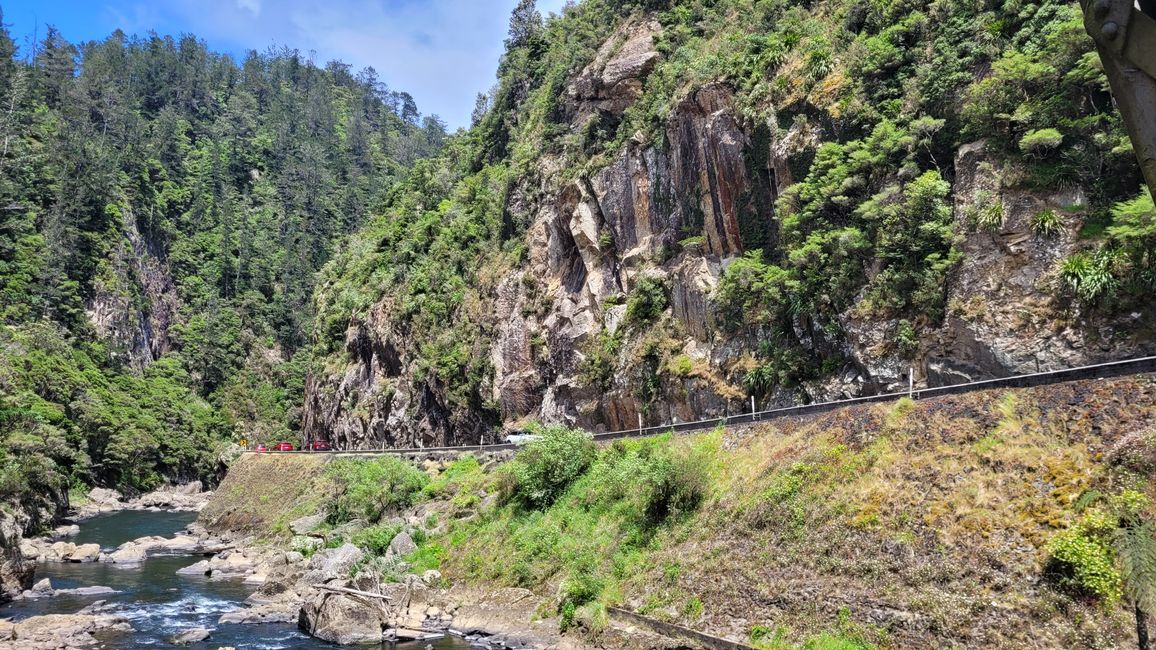
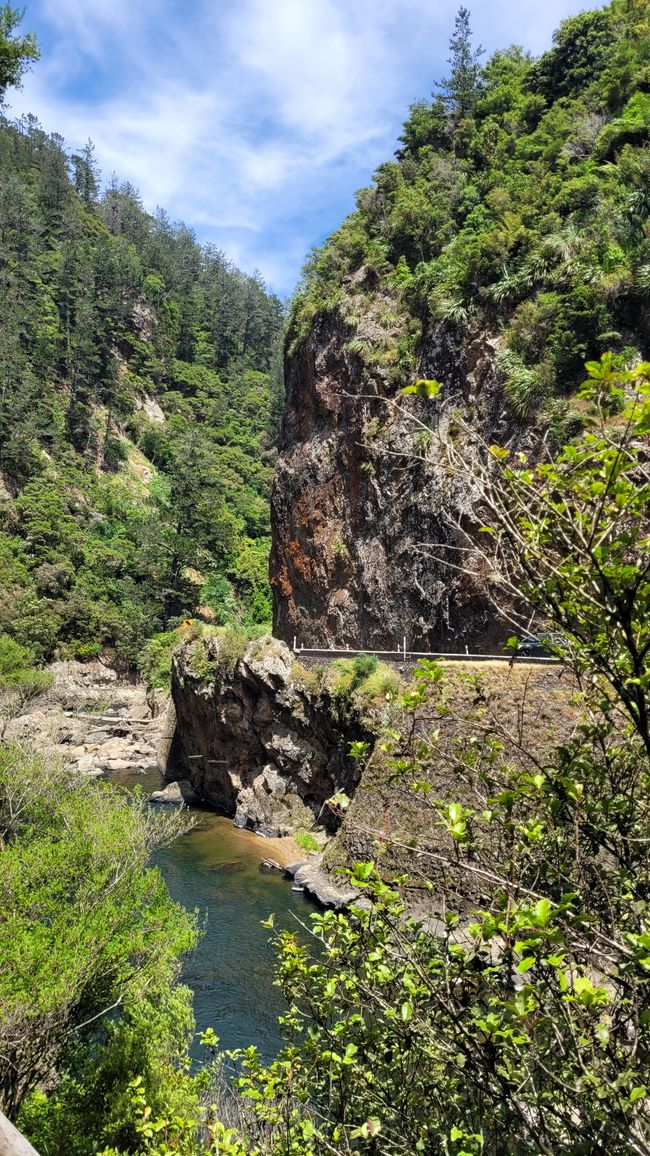

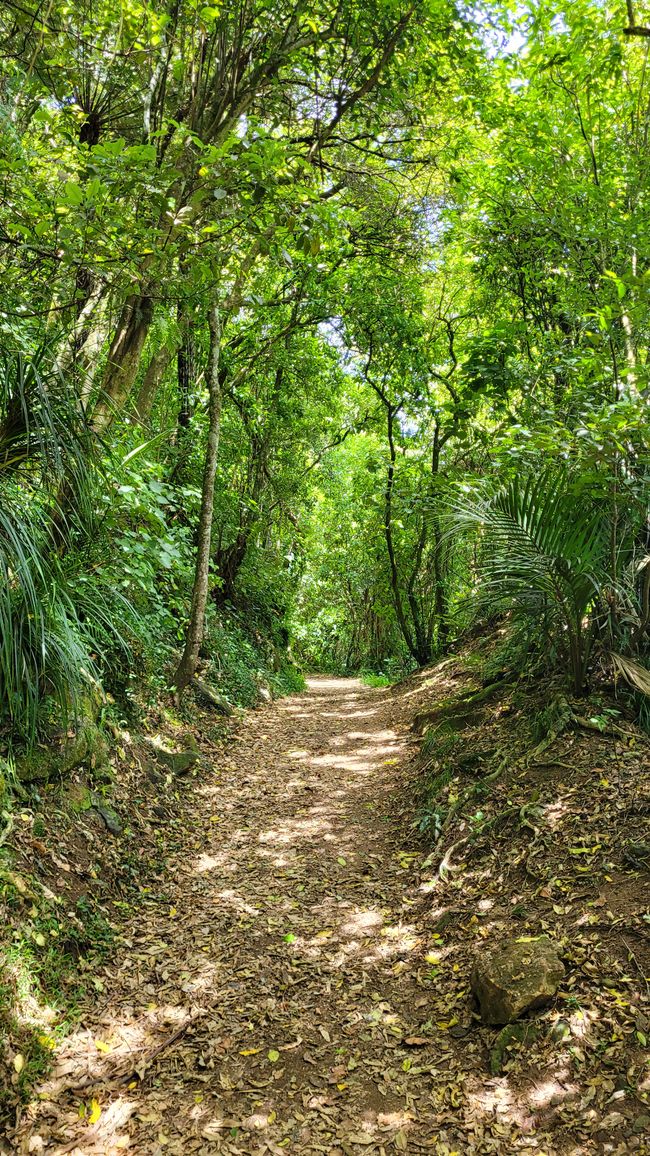
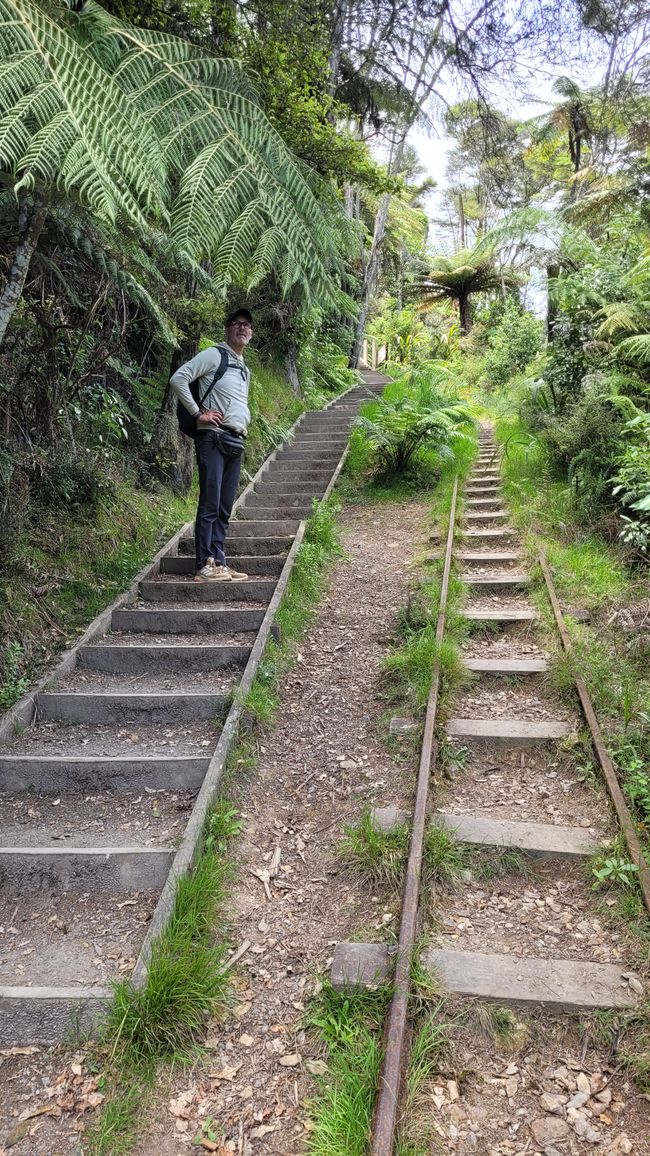
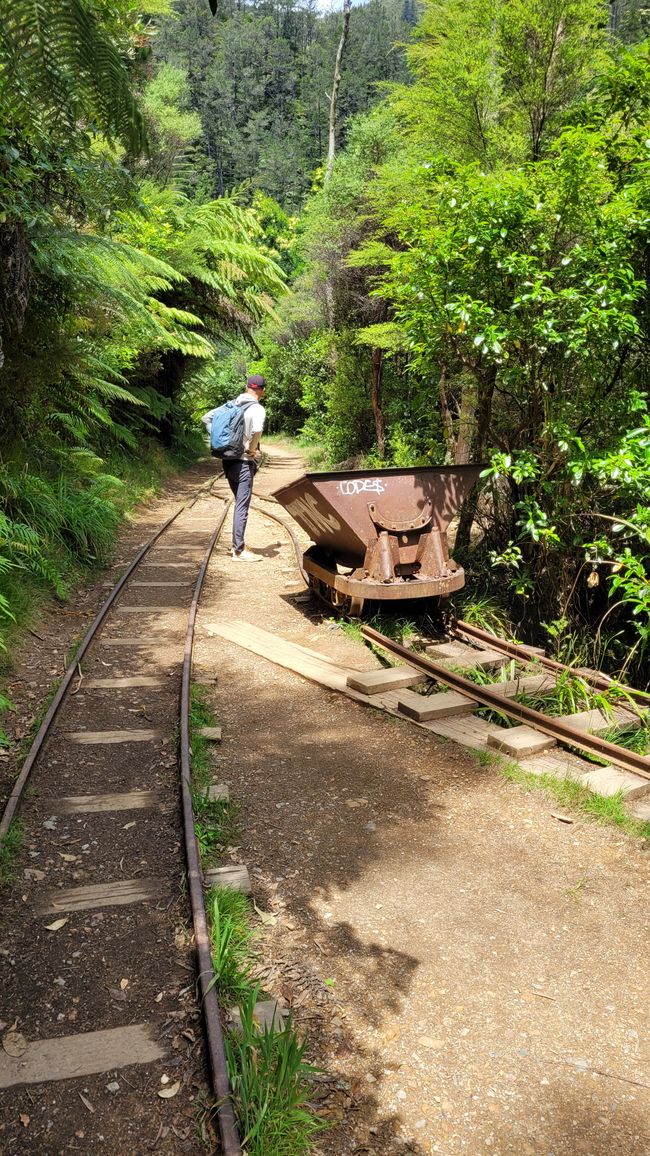
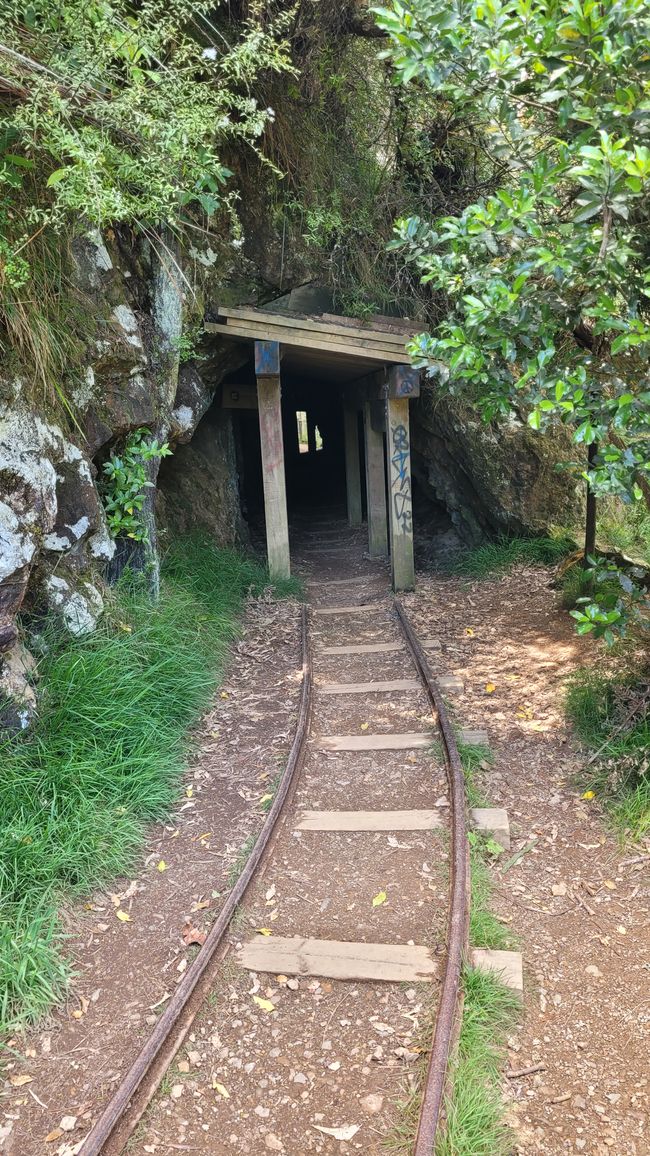
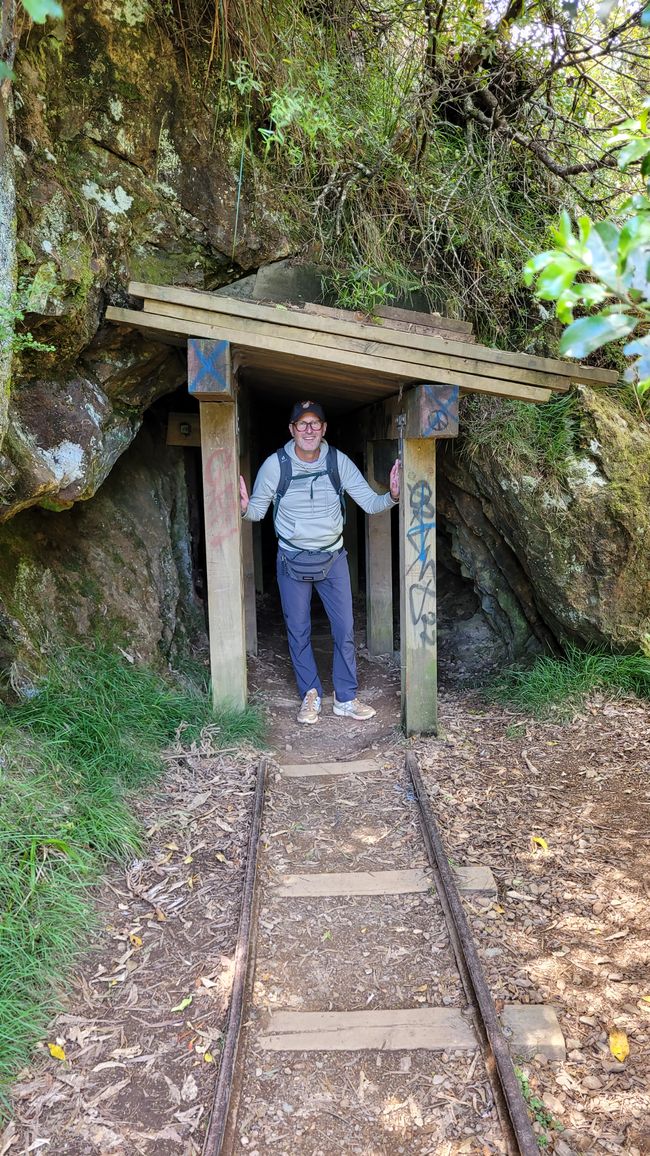

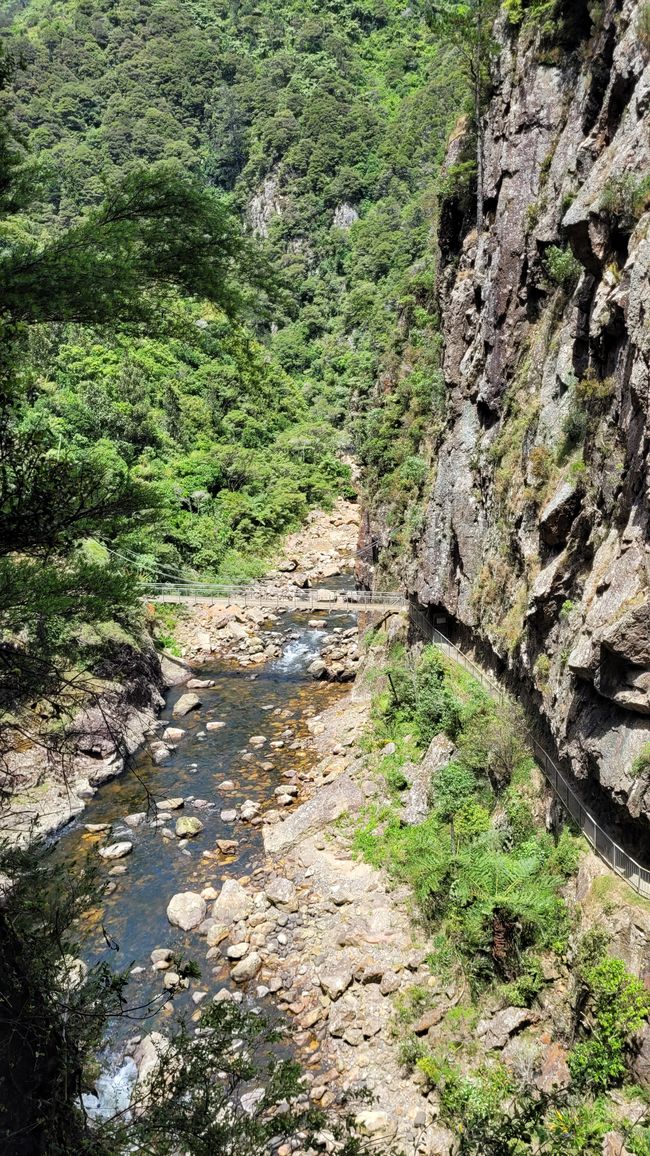
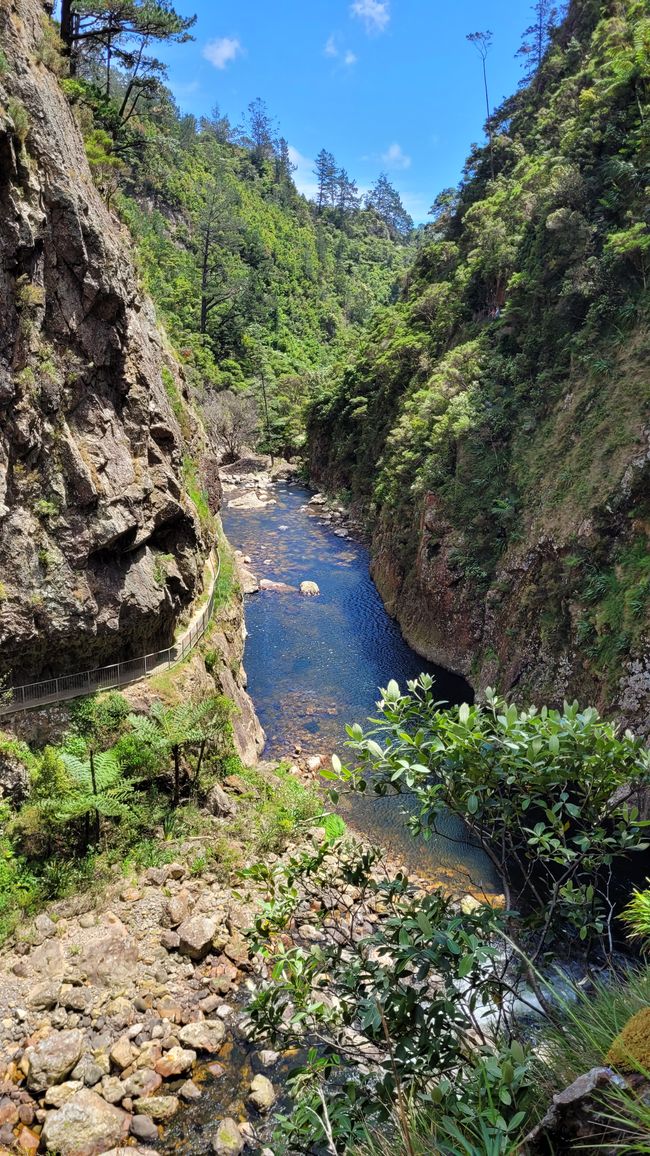
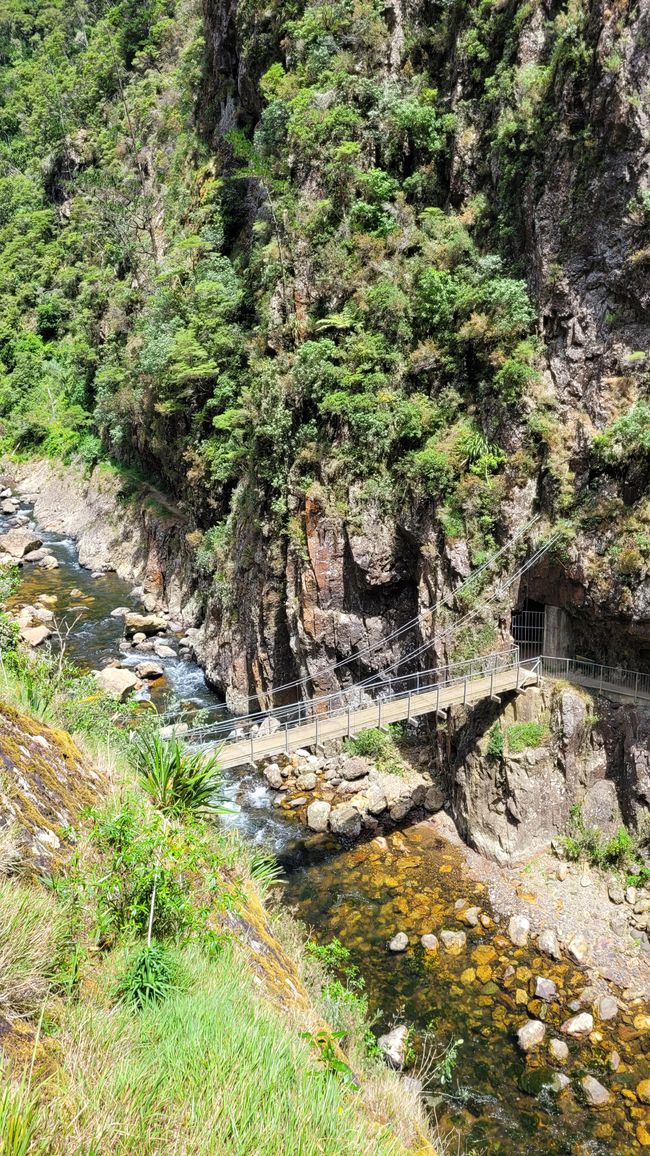
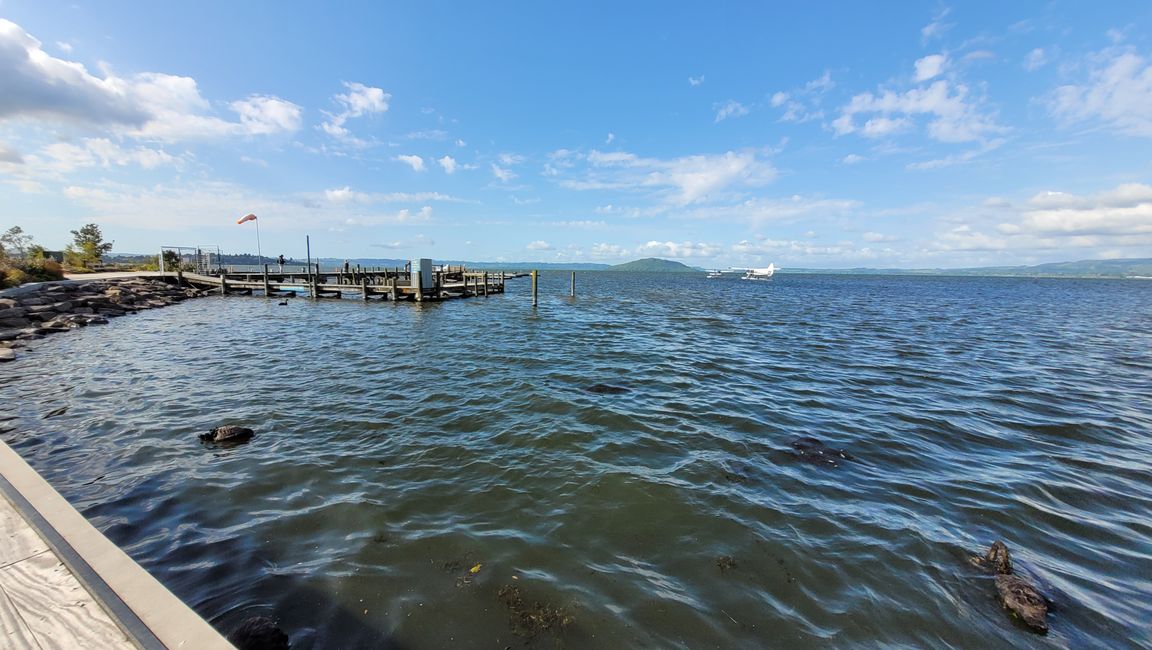
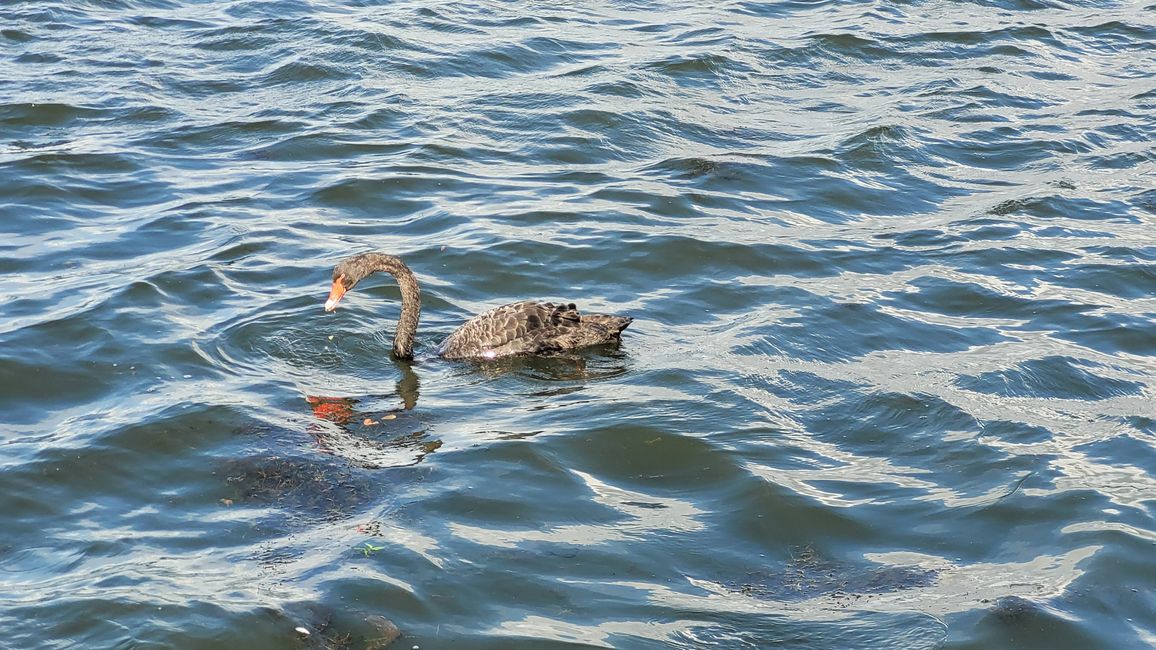
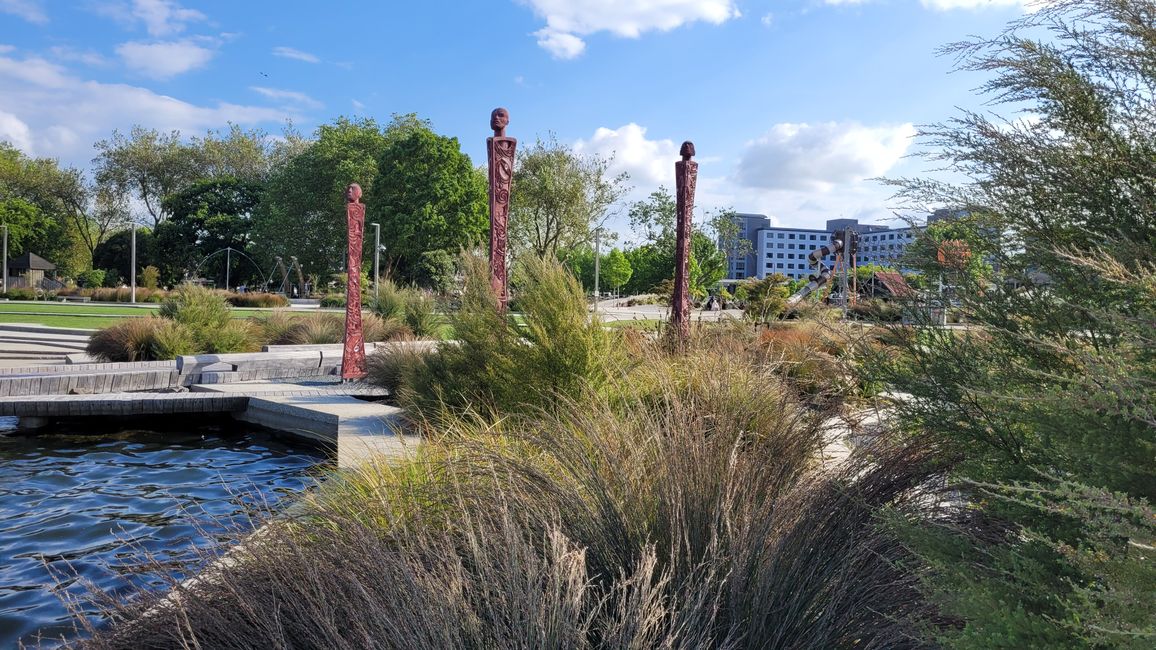
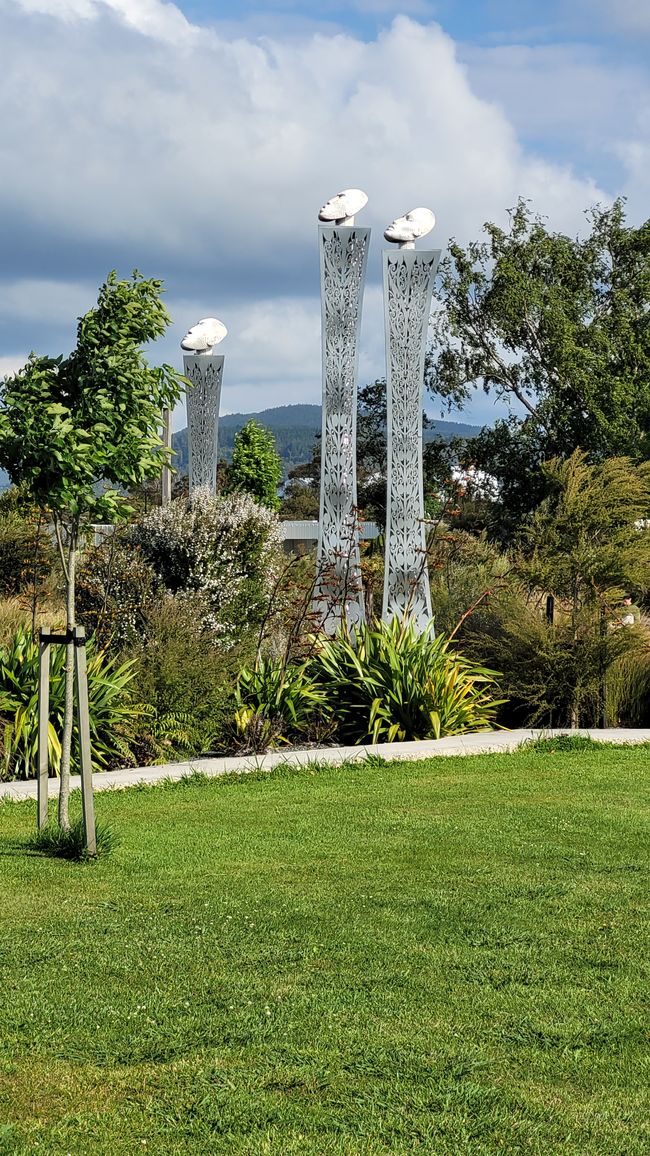
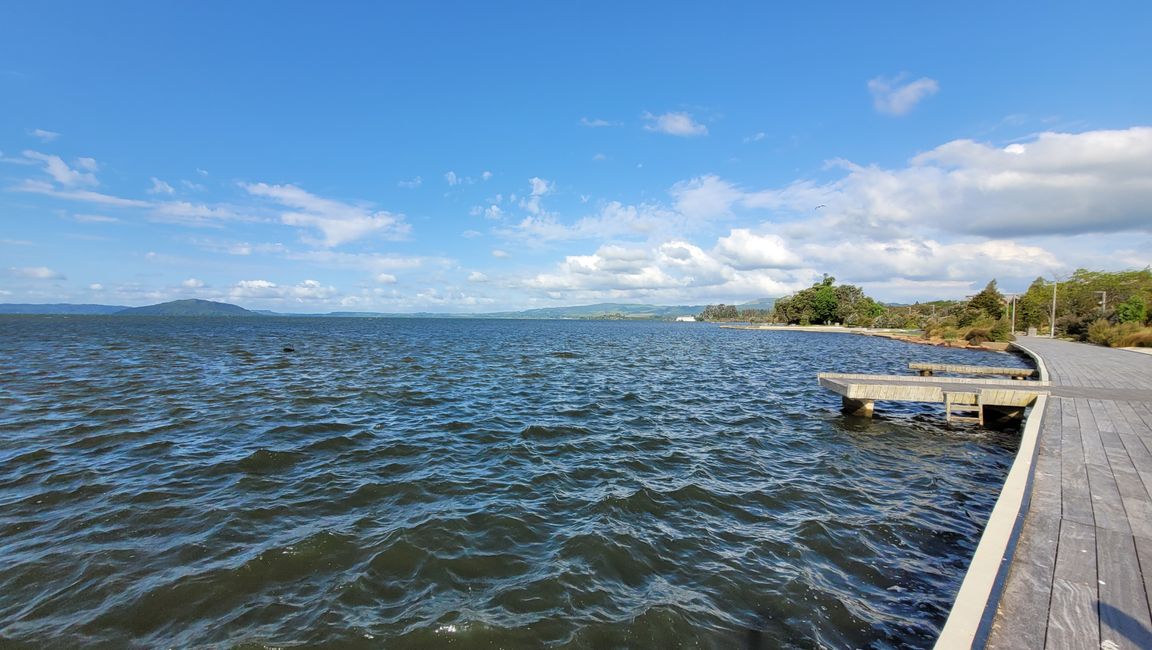
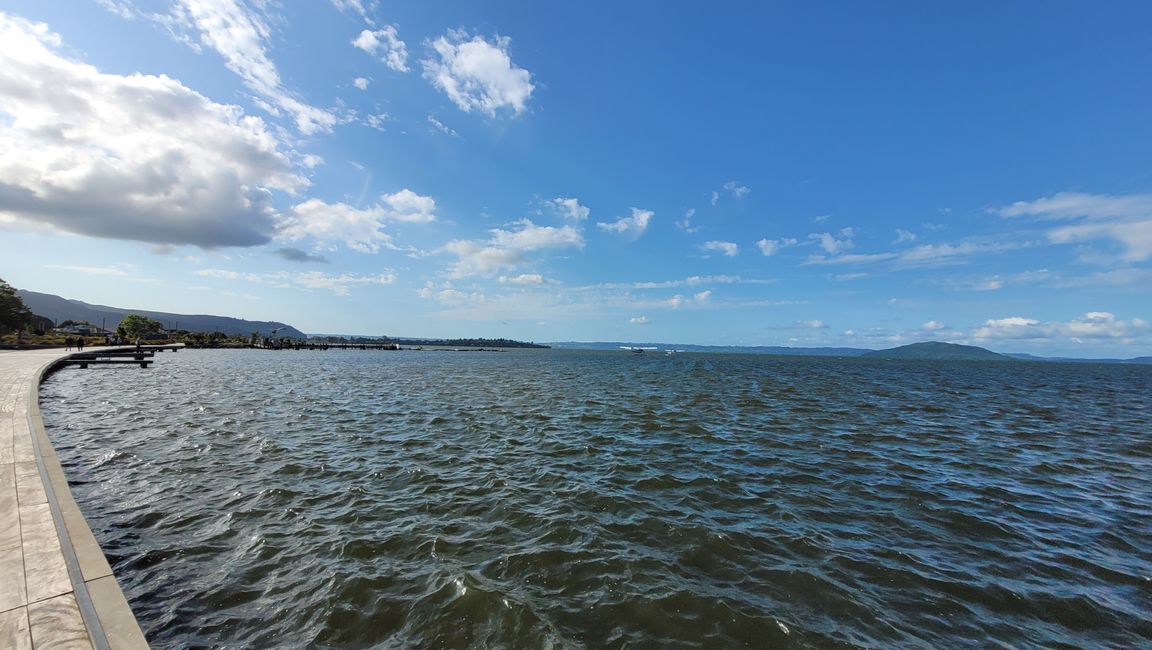
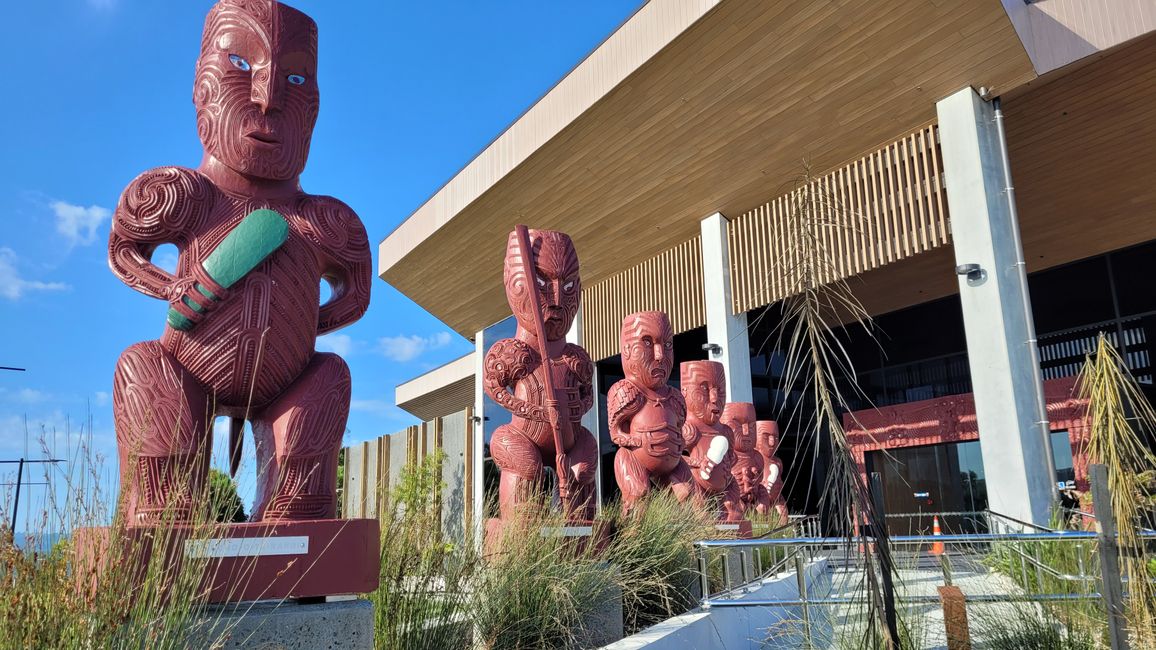
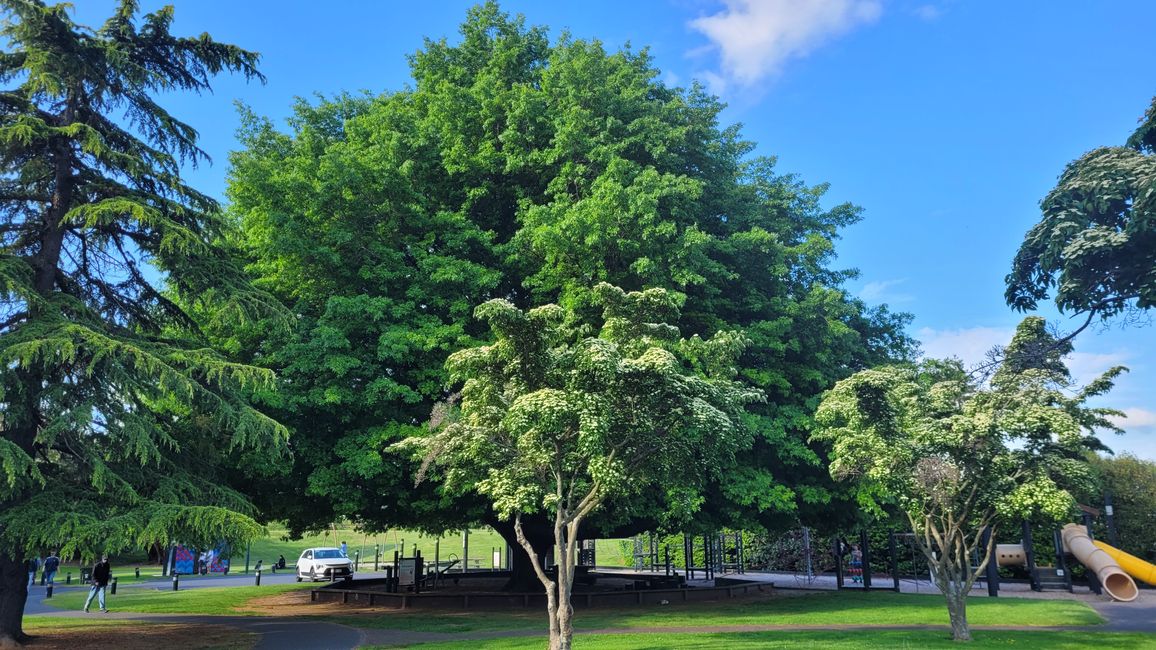
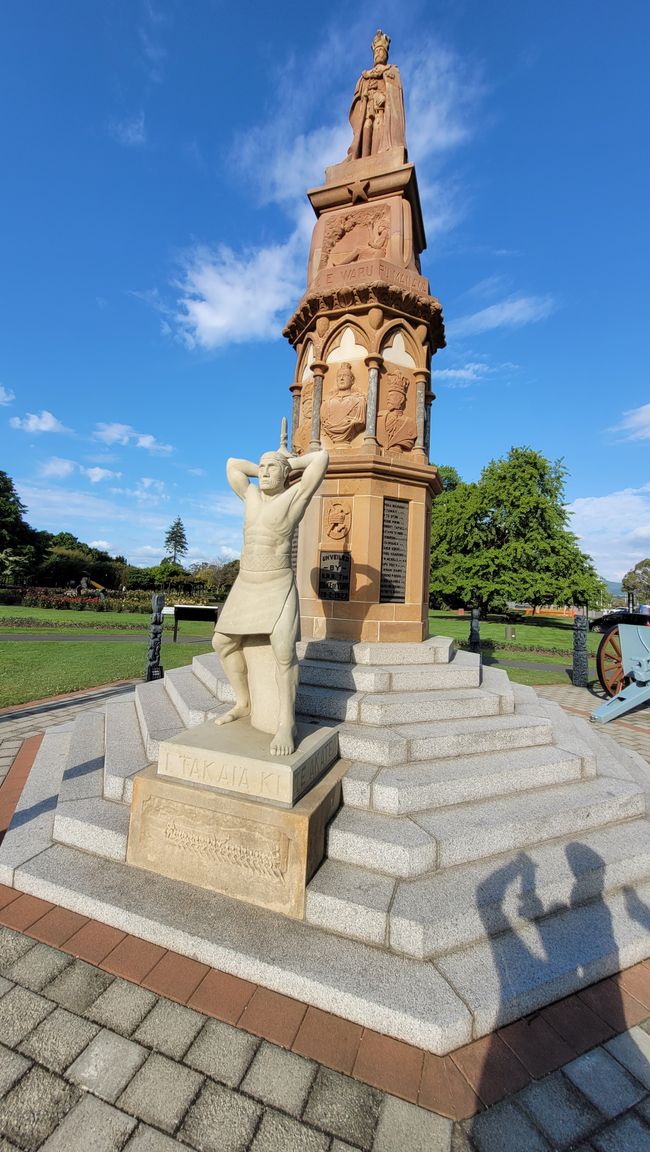

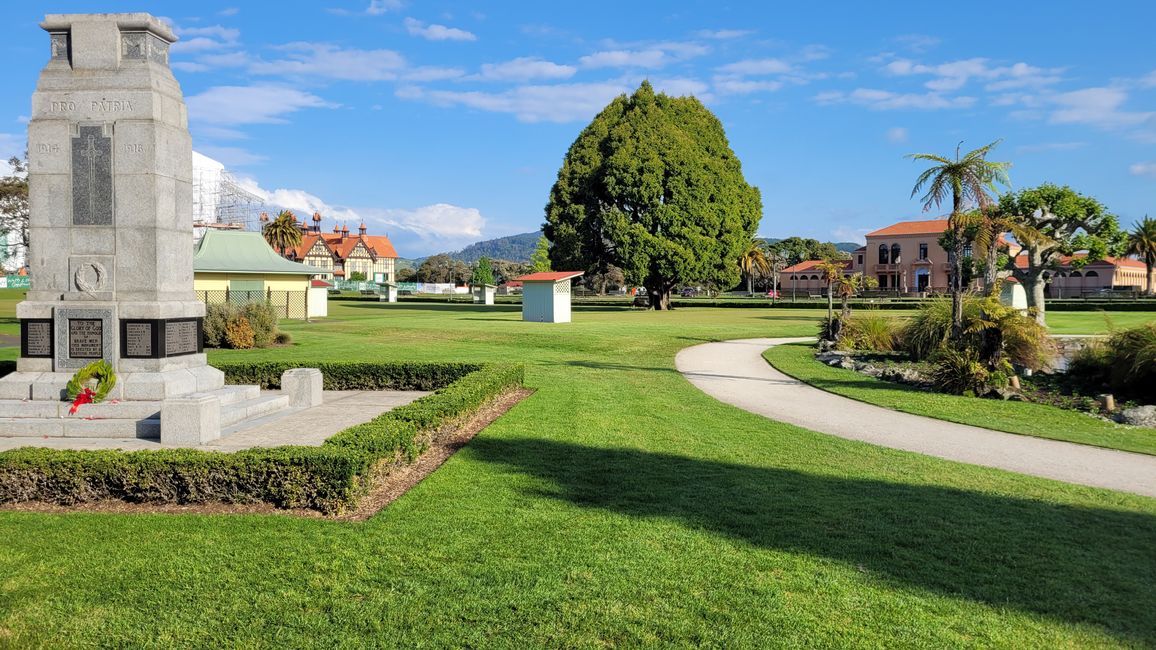
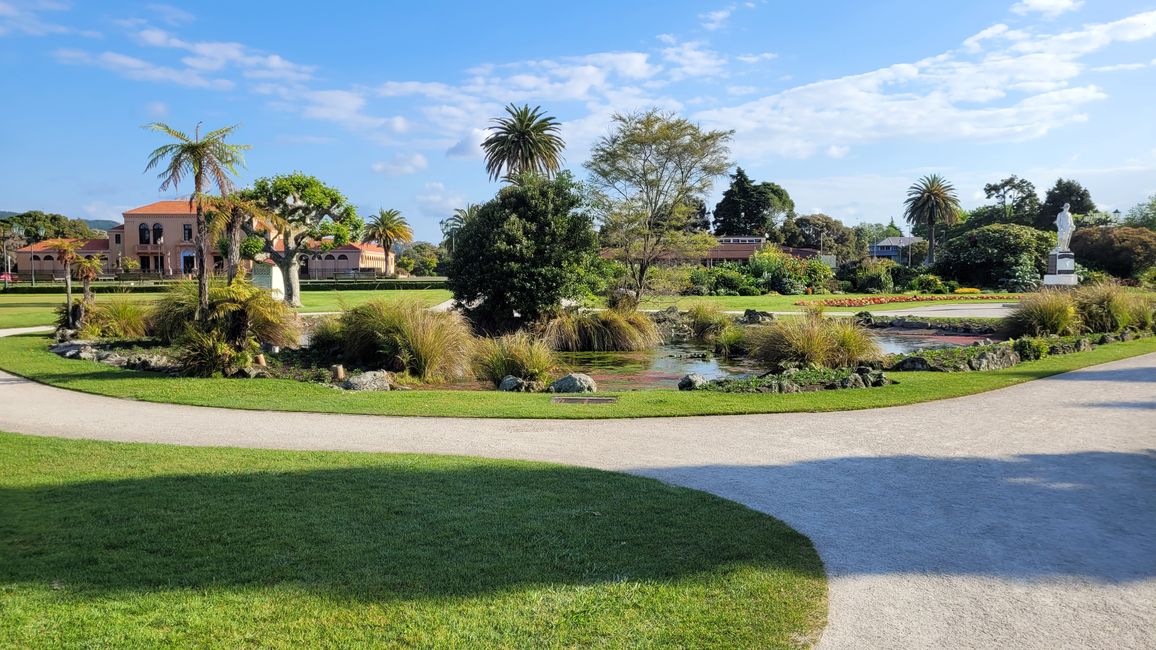

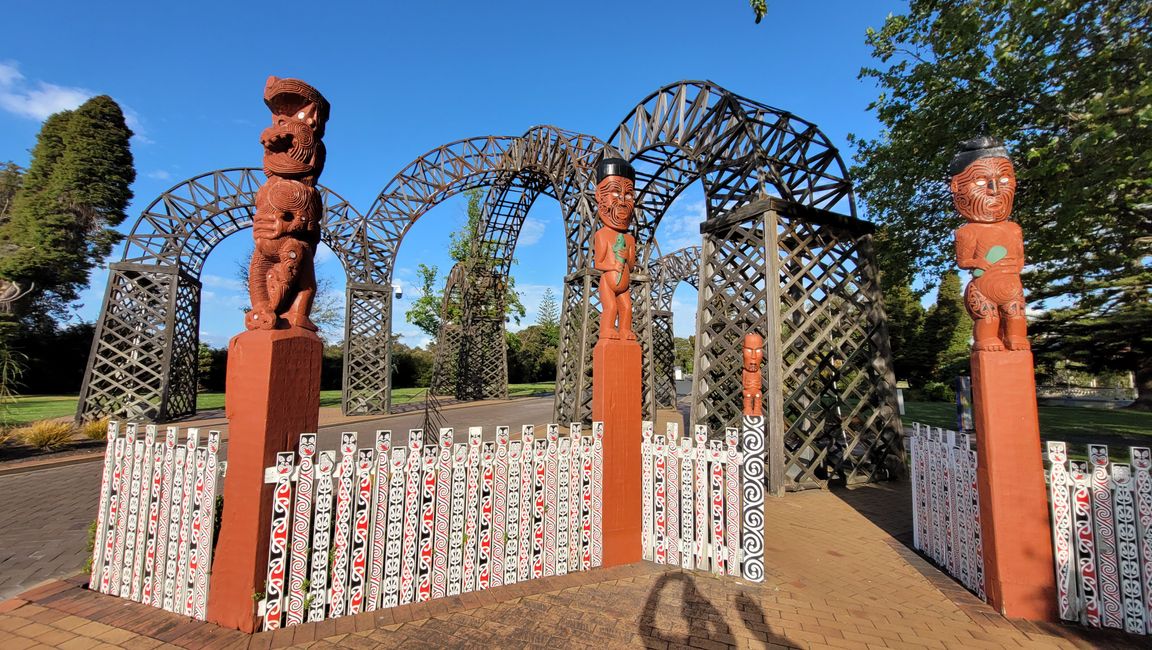
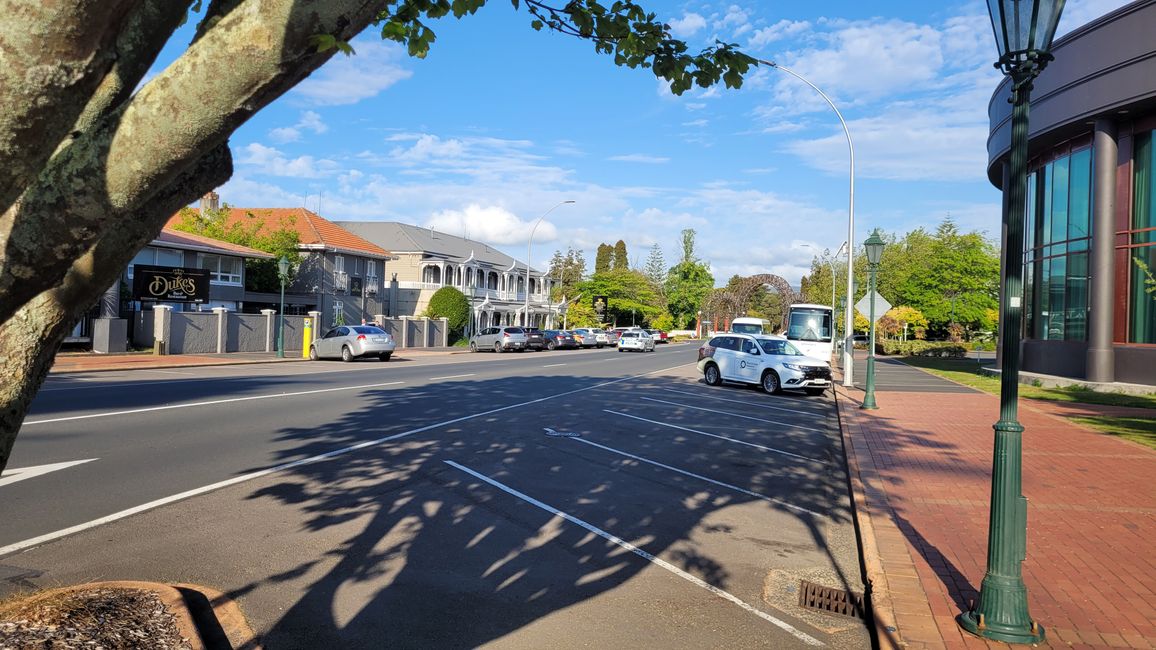
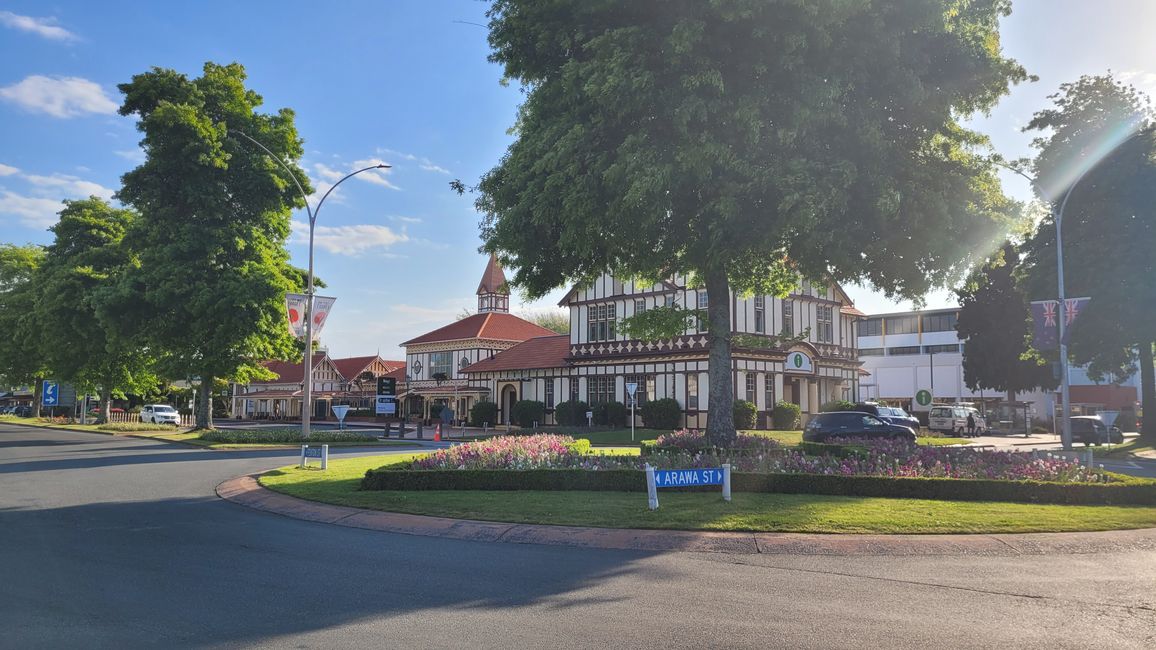
Aw ye aw tɔgɔ sɛbɛn Kibaruyaw la
We leave Auckland heading southeast. Our next destination is Rotorua, by the lake of the same name.
On the way there, we drive through a landscape that slightly resembles southern Germany. Hilly terrain with green meadows, cows, and indeed here and there a cow grazing next to a palm tree. Unfortunately, we couldn’t capture this curious situation in a photo, as it’s better not to stop on the highway...
We approach our first destination, the Karangahake Gorge at the foot of the Coromandel Peninsula. The mountains have also gotten taller by now, making it suitable for the gorge...
Upon arrival, we initially marvel at the flora in the gorge. The gigantic ferns that look like palms stand out. With enormous fronds providing shade and covering a large part of the mountain. Additionally, there are many other plants that are unknown to us.
A wide mountain river flows through the gorge. Here, two mountain rivers converge: the Waitawheta River and the Ohinemuri River.
Gold was still being mined in the Karangahake Gorge around the turn of the century (1900). So much so that it accounted for 60% of New Zealand's gold production. Moreover, ore was also extracted.
We start our hike over the Railway Tunnel Loop along the gorge and through the more than 1 km long tunnel that was previously used and can now be walked through. Exciting, as it is only equipped with emergency lighting and visibility is limited.
Inside the tunnel, it is cool and damp. Water flows incessantly from the rock walls in small streams into the gutters at the edge of the path.
Even outside the tunnel, one can walk beautifully along the gorge and by the river.
There is also another tunnel, which is not quite as long, but rather pitch-dark in parts, located on the Windows Walk. Here, the tunnel is a bit narrower and has a few windows from which one can look into the gorge. Unfortunately, my camera did not want to save the photos I took in the tunnel...
We walk back to the starting point, the parking lot. At a picnic spot, we unpack our dry yet delicious cookies and have something to drink. Next to us, four older women had already settled down. Upon closer inspection, we recognize that they are representatives of the Jehovah's Witnesses. They are not here for hiking. With a mobile information stand, they simply sat there chatting. What makes one think that one can convert people to their faith in a place that is primarily visited by tourists?
We then continue on to Rotorua and check into our hotel for the night.
To end the day, we visit the nearby Lake Rotorua. A large lake, the second largest on New Zealand's North Island, but not deeper than 10 meters. Here, exclusively black swans swim – as far as we could tell – foraging continuously with their necks in the muck...
The entire area around the lake in the city is very well-maintained and beautifully landscaped. Many memorials of the Maori are located here along the promenade. In general, Rotorua is characterized by Maori history. You can recognize it at every corner. The Government Garden, which we also take a look at afterward, is beautifully arranged and showcases a lot of Maori culture.
Aw ye aw tɔgɔ sɛbɛn Kibaruyaw la
Jaabi (1)
Eddy S.
Ah, wie wunderbar: Wenn ich Süddeutschland höre, geht mir eh das Herz auf.
Gut, Palmen haben wir zwar nicht, aber bergiges Gelände mit grünen Wiesen und Kühen. Und beinahe eine bessere Railway. Einen Transrapid.
Das hätte bedeutet: Wenn Sie ... vom Hauptbahnhof in München ... mit zehn Minuten, ohne, dass Sie am Flughafen noch einchecken müssen, dann starten Sie im Grunde genommen am Flughafen ... am ... am Hauptbahnhof in München starten Sie Ihren Flug. Zehn Minuten. Schauen Sie sich mal die großen Flughäfen an, wenn Sie in Heathrow in London oder sonst wo, meine se ... Charles de Gaulle äh in Frankreich oder in ...äh... in ... in...äh...in Rom oder Neuseeland halt.
Was ich sagen will: Wünsch euch noch eine schöne Reise.
Taama rapɔɔriw Zelande kura
